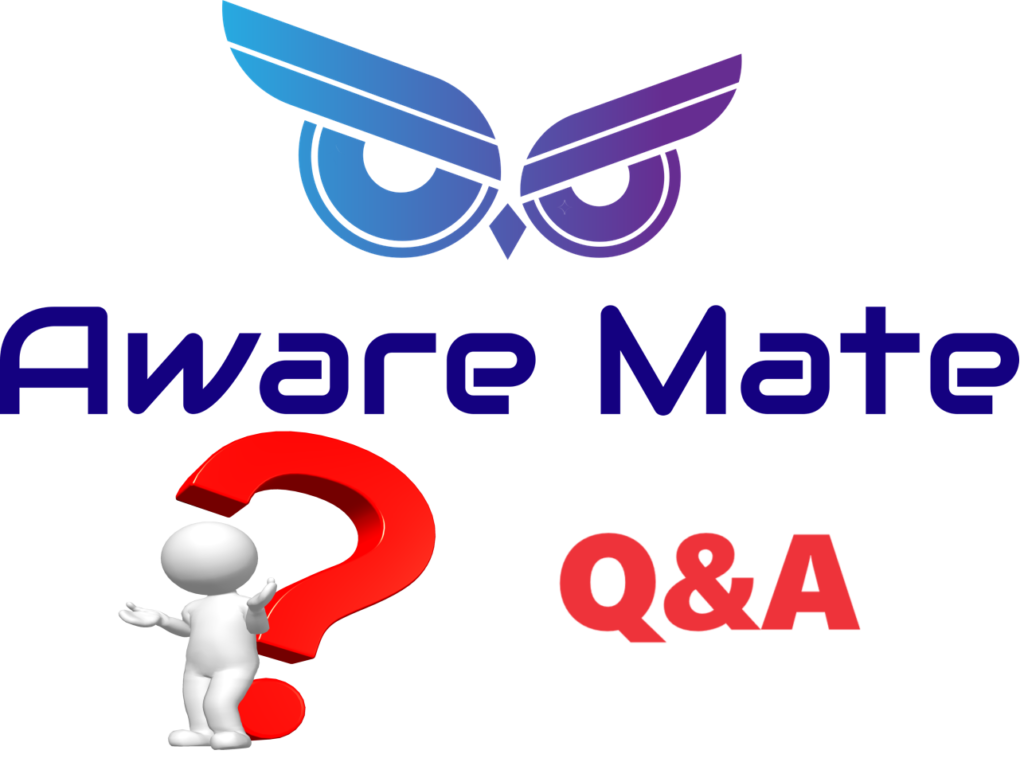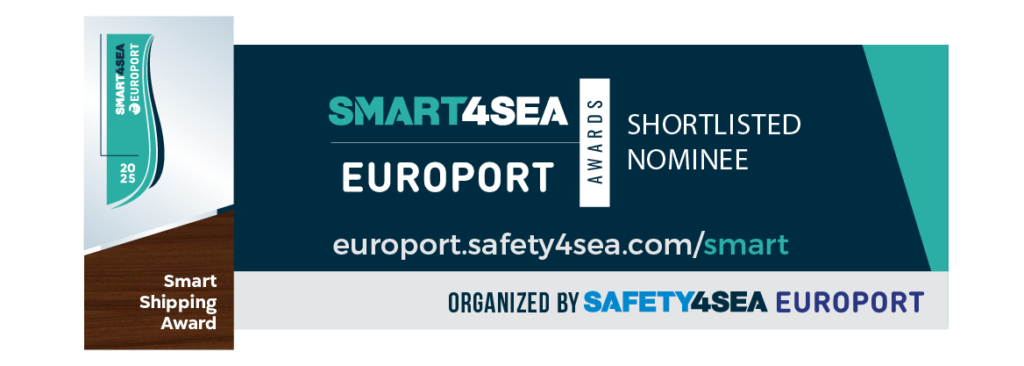
Aware Mate addresses critical safety and efficiency challenges in maritime and inland waterways transportation by using video detection technology to monitor both fatigue and distraction among bridge watchkeepers. Here are the key problems it solves:
Insufficient Fatigue and Distraction Monitoring: Aware Mate tackles the lack of real-time monitoring of fatigue and distraction among officers on the bridge. Traditional systems, such as the Bridge Navigational Watch & Alarm System (BNWAS), introduced over 20 years ago, are limited in their ability to detect reduced alertness or attention lapses during watchkeeping.
Fatigue- and Distraction-Related Accidents: The system targets a major cause of maritime incidents—crew inattention. Studies show that up to 25% of marine casualties involve fatigue. Distraction, such as the use of mobile phones or non-watchkeeping activities, also contributes significantly to human error.
Outdated Monitoring Systems: Aware Mate addresses the shortcomings of systems like BNWAS, including long dormant periods that allow watchkeepers to fall asleep and simplistic reset mechanisms that can be misused or ignored.
Lack of Adaptation to Modern Bridge Operations: The project accounts for evolving watchkeeping practices, such as the introduction of ECDIS and digital radar displays, which change how officers engage with their environment. Aware Mate adapts fatigue and distraction detection to reflect these modern operational conditions.
By solving these challenges, Aware Mate significantly enhances bridge safety by ensuring officers remain alert, attentive, and engaged—helping to prevent accidents caused by reduced vigilance.
It is clear that the issue of fatigue in maritime and inland waterways operations is a significant concern that affects safety, operational efficiency, and crew well-being. Here’s a consolidated overview and analysis of the key points related to fatigue in maritime and inland waterways settings:
Understanding Fatigue in Maritime and Inland Waterways Operations
- Prevalence and Impact: Fatigue is widely recognized as a major factor contributing to accidents and inefficiencies in maritime operations. It not only poses risks to immediate physical safety but also has long-term implications for mental and physical health.
- Regulatory Frameworks: Various international and national regulations address work and rest hours for crew members to mitigate fatigue, including the STCW Convention and the Maritime Labour Convention. However, compliance and enforcement are challenging due to the complexity of maritime operations and varying adherence levels across jurisdictions.
Technological Interventions and Research
- Detection and Management Systems: Advances in technology offer promising avenues for detecting and managing fatigue more effectively. Wearable devices, smart cameras, and software algorithms can monitor signs of fatigue in real-time, enabling proactive measures to prevent accidents.
- Innovative Solutions: Projects like “Aware Mate” propose integrating video detection systems to monitor fatigue, showcasing the potential of combining human oversight with artificial intelligence and machine learning to enhance safety protocols onboard.
Challenges and Recommendations
- Implementation Hurdles: Despite the availability of technological solutions and a solid understanding of fatigue’s impacts, the maritime industry faces hurdles in implementing comprehensive fatigue management systems. These include regulatory limitations, the need for industry-wide standards, and the integration of new technologies into existing maritime operations.
- Holistic Approach Needed: Effective fatigue management requires a holistic approach that considers not only technological solutions but also organizational culture, crew training, and regulatory frameworks. Encouraging a culture of safety, continuous education on fatigue management, and the adoption of best practices are essential steps forward.
Moving Forward
- Regulatory Evolution: There’s a need for regulatory bodies to evolve and adapt frameworks that allow for more flexible, data-driven approaches to fatigue management, aligning with advances in technology and our understanding of human physiology.
- Collaboration and Innovation: Continued collaboration between industry stakeholders, technology developers, and regulatory bodies is crucial. Innovation should be encouraged, with pilots and trials of new technologies and systems being key to finding effective solutions to combat fatigue.
In summary, addressing fatigue in maritime and inland waterways operations requires a multi-faceted approach that combines regulatory compliance, technological innovation, and a culture of safety and well-being. The documents indicate a growing awareness and readiness to tackle fatigue through smarter regulation, advanced technology, and industry-wide collaboration. The challenge lies in effectively integrating these elements into the complex and diverse landscape of global maritime operations.
MAIB BRIDGE WATCHKEEPING SAFETY STUDY: Is a comprehensive report prepared by the Marine Accident Investigation Branch, detailing the circumstances and causes of accidents in marine navigation with the aim of enhancing safety at sea and preventing future accidents. The study, rooted in investigations into 66 maritime incidents, identifies critical safety issues such as fatigue, inadequate manning, and the misuse of radar and lookout practices. It emphasizes the need for improved manning levels, fatigue management, and the effective use of watchkeeping resources to mitigate the risks of groundings and collisions. The findings and recommendations are geared towards influencing international maritime safety standards and practices, particularly through the International Maritime Organization (IMO), to ensure higher safety standards aboard merchant vessels.
The ITF FATIGUE REPORT: Adequate Crewing and Seafarers’ Fatigue: The International Perspective” is an in-depth analysis conducted by Professor Andy Smith from the Centre for Occupational and Health Psychology at Cardiff University. The report provides a comprehensive overview of the current state of knowledge regarding fatigue among seafarers, highlighting the significant health and safety risks associated with excessive work hours and inadequate rest periods. It emphasizes the need for improved manning levels and the implementation of effective fatigue management strategies to ensure the well-being of seafarers and the safety of maritime operations. Through a holistic approach, the report aims to shed light on the prevalence, causes, and consequences of fatigue in the maritime industry, offering recommendations for stakeholders to address this critical issue.
SEAFARER FATIGUE: THE CARDIFF RESEARCH PROGRAMME: Is a seminal study led by researchers from Cardiff University, focusing on the prevalence, causes, and consequences of fatigue among seafarers. Conducted with the support of various maritime organizations, this research delves into the multifaceted nature of fatigue in the maritime industry, its impact on health, safety, and performance, and the effectiveness of current management strategies. By employing a range of methodologies, the study aims to provide a comprehensive understanding of fatigue, contributing to the development of best practices and policy recommendations for improving seafarer well-being and operational safety.
Unlike the current Bridge Navigational Watch Alarm System (BNWAS), which has several limitations, Aware Mate offers a proactive approach to detecting both fatigue and distraction. It eliminates reliance on manual reset actions by providing continuous, real-time monitoring of behavioral and physiological signs. This direct monitoring approach enables early identification of reduced alertness or attention lapses, significantly enhancing maritime safety.
Aware Mate offers several key benefits aimed at enhancing maritime safety and operational efficiency through innovative fatigue and distraction monitoring technology. Below are the main advantages based on the system’s objectives and features:
Improved Maritime Safety:
By accurately detecting signs of fatigue and distraction in watchkeeping officers in real time, Aware Mate significantly reduces the risk of accidents caused by reduced alertness. This proactive approach enhances the safety of vessels, crew, and cargo.
Enhanced Watchkeeper Well-being:
The system supports the well-being of watchkeepers by promptly identifying early signs of both fatigue and visual distraction. This reduces the risk of microsleeps, lapses in attention, and long-term health issues related to chronic fatigue and cognitive overload.
Integration with Existing Systems:
Aware Mate is compatible with existing Bridge Navigational Watch Alarm Systems (BNWAS), enhancing current safety protocols without requiring major infrastructure changes. This ensures an efficient upgrade path for shipping operators.
Privacy Protection:
Designed with privacy in mind, Aware Mate operates fully offline. It does not record, transmit, or store personal data, and only shares anonymized insights—maintaining full compliance with privacy standards and protecting crew members.
Operational Efficiency:
By preventing incidents caused by fatigue or distraction, Aware Mate helps maintain schedule reliability, reduce downtime, and minimize accident-related costs—contributing to smoother, more efficient operations and potentially lower insurance risk.
Adaptability:
The system’s flexible design allows it to be deployed across various vessel types and bridge configurations. This adaptability makes Aware Mate a scalable solution for diverse maritime and inland waterways applications.
24/7 Monitoring:
With infrared-enabled face and eye-tracking algorithms, Aware Mate operates effectively both day and night. Continuous monitoring ensures safety during all watch periods, aligning with the nonstop demands of maritime navigation.
Together, these benefits make Aware Mate a comprehensive safety solution for today’s maritime environment—mitigating fatigue and distraction to promote safer, more reliable operations.
Yes, Aware Mate can be integrated with existing Bridge Navigational Watch Alarm Systems (BNWAS), adding an additional layer of safety without the need to completely replace current systems. This integration allows shipping companies to leverage their existing investments while significantly improving their fatigue monitoring capabilities.
Aware Mate is built with privacy at its core, operating completely offline to ensure no personal data leaves the vessel. Fatigue and stress monitoring are handled locally, with no transmission of identifiable crew information. For shipping companies, Aware Mate offers anonymized, aggregated analytics that help identify trends related to fatigue and excessive stress, enabling them to contextualize performance issues and address potential risks. By focusing on patterns and overall performance, shipping companies can take preventive measures to enhance safety without accessing any personally identifiable information (PII).
Aware Mate is designed to be versatile and adaptable, making it suitable for a wide range of vessels that require bridge watchkeeping. Its implementation can be customized to meet the specific needs and safety protocols of different types of maritime and inland waterways operations.

